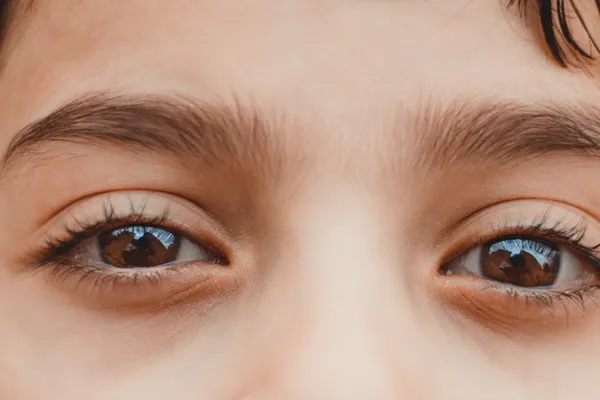Articles & Research

At-Home Therapy Reduces Symptoms of Binocular Vision Disorders
Our eyes are working harder than ever. As a population we’re spending less time outside focusing on the far, instead, we’re spending hours in front of screens working, learning, or entertaining ourselves with the near. Young patients, in particular, were spending between four to seven hours online pre-pandemic. With online learning during the pandemic, many students increased their online usage by 5 to 6 additional hours.
Increased screen time has focused the eye care industry’s attention on the impact of binocular vision disorders. Our eyes were never intended to spend long periods of time on close work – such as reading or at a computer. Eyestrain is caused by the visual demands of modern living.
Binocular Vision Disorders
Just as many of us do not have 20/20 distance vision, many of us also have problems with the skills required to sustain near vision tasks. Binocular Vision Disorders are conditions where the two eyes are unable to align correctly, no longer work as a team, and focus on different objects near to use and can occur in as many as 30 percent of patients, affecting their ability to see properly. A few of these more common issues include amblyopia, strabismus, and convergence Insufficiency (CI).
Our eyes need to be able to do the following:
Converge–aiming together to combine the images from each eye into one.
Accommodate–curving the lens to bring images into clear focus
Fixate–moving the eyes across a page fluidly and then jumping to the next line.
They all include a number of symptoms including eyestrain, double vision, blurred vision, poor eye-hand coordination, poor depth perception, reading difficulty, visual fatigue, and headaches.
Learning Difficulties
Learning can be impaired if eye movements are slow or if the eyes jump, “stutter” or lose their place when reading a book or from a computer screen.
If a child does not have adequate near vision skills, asthenopia or eye strain symptoms may occur. It’s not a seeing problem, so glasses alone won’t fix it. It’s an eye muscle problem. If good visual skills have not been developed, learning is difficult and stressful. Children may react in one or more ways, including:
avoiding reading and other near visual work as much as possible,
attempting to do the work but with decreased understanding,
being an “underachiever,”
having a short attention span,
getting fatigued easily.
While vision problems do not “cause” learning disabilities, poor near vision skills can impede remedial efforts by interfering with the learning process.
Identifying Binocular Vision Issues
With a quick, simple automated sensorimotor screening, an eye care provider can identify a potential issue related to Binocular Vision Disorders. The 30-second screening identifies patients who may warrant a comprehensive examination. The automated, comprehensive Sensorimotor Exam is then administered in just minutes, and includes a 9-Point Motor Function test, Monocular CGP test, and 4-Dot Fusion test. From the exam, an eye care provider can determine the best course of remedy or therapy for the patient.
Vision Therapy Treatment for Binocular Vision Disorders
The muscles of the eyes must work together as a team — learning to focus and relax as needed. If the eye muscles are not coordinated, they fatigue. The result can be eye strain symptoms. Eye exercises can improve how eye muscles work and relieve patient symptoms. Just like fitness training for the eye muscles.
Studies have found that symptoms associated with convergence insufficiency are reduced by in-office vision therapy with supplemental home therapy. HTS Computerized Home Vision Therapy [brochure download] is one home therapy solution which can eliminate or significantly reduce symptoms. Patients are given a series of eye exercises – to complete at the computer. The initial tasks are easy and many kids report it’s similar to a computer game. By following arrows across the screen, patients find hidden 3D boxes within boxes and identify the movement of images. The computer automatically increases the challenge based on patient improvement.
Exercises can be done anywhere patients have a device — at home, school, orthe office. Most patients finish the program in six to eight weeks. Then do weekly maintenance sessions for a few months – to reinforce new skills. Upon successful completion of therapy, eyes typically function comfortably and efficiently as a team. Near vision tasks will become more enjoyable and rewarding, and patients report a longer attention span – and better comprehension.
The revolutionary RightEye Sensorimotor system is powered by advanced eye-tracking technology. The built-in automated screener and compressive exam offers ECPs a vast improvement over time-consuming, manual, and subjective sensorimotor tests.

